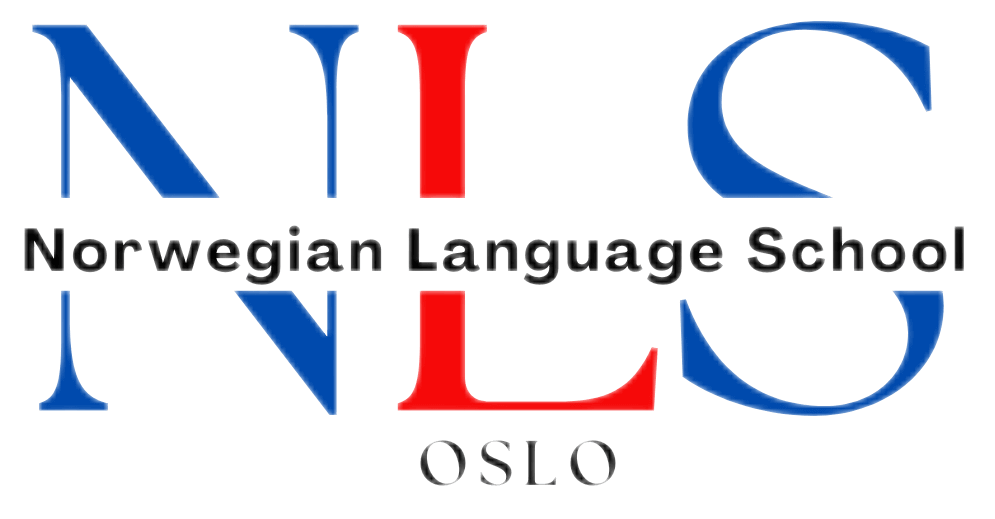

Past and Present: Historical Vocabulary for a Deeper Understanding of Norsk
Learning a new language involves more than just memorizing vocabulary and grammar rules. It also requires an understanding of the historical context and cultural influences that have shaped the language over time. This is especially true for learning Norsk, the Norwegian language. Historical vocabulary plays a crucial role in language learning as it provides insight into the origins and evolution of words, allowing learners to gain a deeper understanding of the language and its cultural heritage.
Historical vocabulary is important in learning Norsk because it helps learners connect with the rich history and cultural heritage of Norway. By studying historical vocabulary, learners can gain a better understanding of the customs, traditions, and values that have shaped the Norwegian language. It also allows learners to appreciate the linguistic diversity within Norsk and understand how different historical periods have influenced the language.
Table of Contents
ToggleSpeak Norsk: Incorporating Historical Vocabulary into Everyday Conversations
Incorporating historical vocabulary into everyday conversations is a great way to enhance your Norsk language skills and deepen your understanding of the language. There are many common historical words and phrases that are still used in everyday Norsk conversations. For example, the word “hilsen” which means “greeting” or “regards” has its roots in Old Norse. Similarly, the phrase “takk for maten” which means “thank you for the food” is a common expression used after a meal and has its origins in traditional Norwegian customs.
To incorporate historical vocabulary into your daily Norsk conversations, you can start by learning a few common words and phrases that have historical significance. For example, you can learn words related to traditional Norwegian food, clothing, or customs. You can also try using old-fashioned expressions or idioms in your conversations to add a touch of historical flair. By incorporating historical vocabulary into your conversations, you not only improve your language skills but also gain a deeper appreciation for the cultural heritage of Norsk.
Learn Norsk: The Role of Historical Vocabulary in Norsk Language Acquisition
Historical vocabulary plays a crucial role in Norsk language acquisition as it provides learners with a broader understanding of the language and its cultural context. By learning historical vocabulary, learners can gain insights into the origins and evolution of words, which can help them make connections and remember new vocabulary more effectively.
In addition to aiding in vocabulary acquisition, learning historical vocabulary also helps learners develop a deeper appreciation for the language and its cultural heritage. By understanding the historical context in which words were used, learners can better understand the nuances and connotations of words in modern Norsk. This not only improves their language skills but also allows them to engage more fully with Norwegian culture and literature.
Norsk Vocabulary: Exploring the Significance of Old Norse Words in Modern Norsk
The influence of Old Norse on modern Norsk vocabulary is significant. Old Norse was the language spoken by the Vikings, who played a crucial role in shaping Norwegian history and culture. As a result, many words in modern Norsk have their roots in Old Norse.
For example, the word “fjord” which refers to a narrow inlet of the sea is derived from the Old Norse word “fjǫrðr.” Similarly, the word “hus” which means “house” in modern Norsk can be traced back to the Old Norse word “hús.” These examples demonstrate how Old Norse has left a lasting impact on modern Norsk vocabulary.
By exploring the significance of Old Norse words in modern Norsk, learners can gain a deeper understanding of the language and its cultural heritage. It also allows them to appreciate the linguistic diversity within Norsk and understand how different historical periods have influenced the language.
Norsk Verb List: Understanding the Evolution of Norsk Verbs through History
Norsk verbs have evolved over time, and understanding their historical roots is essential for language learners. By understanding the evolution of Norsk verbs, learners can gain insights into the changes in verb conjugation and usage over time.
For example, the verb “å være” which means “to be” in modern Norsk has its roots in Old Norse. In Old Norse, the verb “vera” was used to indicate existence or possession. Over time, the verb conjugation and usage of “å være” have changed, but its historical roots can still be traced back to Old Norse.
Understanding the historical roots of Norsk verbs allows learners to grasp the intricacies of verb conjugation and usage more effectively. It also helps them make connections between different verb forms and tenses, making it easier to remember and use verbs correctly in everyday conversations.
Norsk Course: Incorporating Historical Vocabulary into Norsk Language Courses
Incorporating historical vocabulary into Norsk language courses is an effective way to enhance language learning and provide learners with a deeper understanding of the language and its cultural heritage. Many Norsk language courses include modules or lessons that focus on historical vocabulary, allowing learners to explore the origins and evolution of words.
By incorporating historical vocabulary into Norsk language courses, learners can gain a broader perspective on the language and its cultural context. They can also develop a deeper appreciation for the linguistic diversity within Norsk and understand how different historical periods have influenced the language.
In addition to providing a deeper understanding of the language, incorporating historical vocabulary into Norsk language courses also helps learners develop their language skills more effectively. By learning about the historical context in which words were used, learners can better understand the nuances and connotations of words in modern Norsk. This not only improves their language skills but also allows them to engage more fully with Norwegian culture and literature.
The Viking Influence on Norsk Vocabulary: Tracing the Roots of Norsk Words to Old Norse
The Viking influence on Norsk vocabulary is significant, and many common Norsk words have their roots in Old Norse. The Vikings played a crucial role in shaping Norwegian history and culture, and their language has left a lasting impact on modern Norsk.
For example, the word “skål” which means “cheers” in modern Norsk is derived from the Old Norse word “skál.” Similarly, the word “gård” which means “farm” or “estate” can be traced back to the Old Norse word “garðr.” These examples demonstrate how the Viking influence has shaped modern Norsk vocabulary.
By tracing the roots of Norsk words to Old Norse, learners can gain a deeper understanding of the language and its cultural heritage. It also allows them to appreciate the linguistic diversity within Norsk and understand how different historical periods have influenced the language.
Norsk Dialects: The Role of Historical Vocabulary in Understanding Regional Variations of Norsk
Norsk dialects are known for their regional variations, and historical vocabulary plays a crucial role in understanding these variations. Each region in Norway has its own unique dialect, which is influenced by historical factors such as settlement patterns, trade routes, and cultural interactions.
By understanding the historical vocabulary used in different Norsk dialects, learners can gain insights into the cultural and historical context of each region. This not only enhances their language skills but also allows them to engage more fully with Norwegian culture and connect with people from different regions.
For example, in the dialect spoken in Bergen, the word for “thank you” is “takk,” while in other dialects it may be “tusen takk” or “takk skal du ha.” By learning about these regional variations and the historical vocabulary associated with them, learners can better understand and appreciate the linguistic diversity within Norsk.
Norsk Literature: The Significance of Historical Vocabulary in Understanding Norsk Literary Works
Historical vocabulary is used extensively in Norsk literature, and understanding it is essential for fully appreciating and understanding literary works. Many Norsk literary works draw on historical events, cultural traditions, and linguistic nuances that are reflected in the language used.
By understanding the historical vocabulary used in Norsk literature, learners can gain insights into the cultural and historical context of the works. This allows them to appreciate the nuances and symbolism used by authors, as well as the linguistic diversity within Norsk.
For example, in Henrik Ibsen’s play “Peer Gynt,” the use of historical vocabulary helps create a sense of time and place, as well as convey the cultural and social context of the characters. By understanding the historical vocabulary used in this play, learners can gain a deeper appreciation for Ibsen’s work and connect with the cultural heritage of Norway.
Embracing the Richness of Norsk Language through Historical Vocabulary
In conclusion, historical vocabulary plays a crucial role in learning Norsk and gaining a deeper understanding of the language and its cultural heritage. By incorporating historical vocabulary into everyday conversations, learners can enhance their language skills and connect with the rich history of Norway.
Understanding the role of historical vocabulary in Norsk language acquisition allows learners to develop a broader perspective on the language and appreciate its linguistic diversity. By exploring the significance of Old Norse words in modern Norsk, learners can gain insights into the origins and evolution of words.
Incorporating historical vocabulary into Norsk language courses provides learners with a structured approach to learning historical vocabulary and enhances their language skills. Tracing the roots of Norsk words to Old Norse allows learners to appreciate the Viking influence on Norsk vocabulary.
Understanding historical vocabulary is also essential for understanding regional variations of Norsk dialects and fully appreciating Norsk literary works. By embracing the richness of Norsk language through historical vocabulary, learners can deepen their understanding of the language and its cultural heritage.
If you’re interested in expanding your knowledge of Norwegian vocabulary, you might also enjoy reading the article “Exploring Norwegian Culture: Vocabulary Related to Traditions and Festivals.” This article delves into the rich cultural heritage of Norway, providing insights into traditional customs and celebrations. From national holidays to regional festivals, you’ll discover a range of vocabulary that will deepen your understanding of Norwegian culture. Check it out here.

Norwegian A1-A2
Course Overview The Norwegian A1-A2 course is an online program focused on teaching essential Norwegian grammar and vocabulary. It includes a variety of materials and topics, with opportunities to interact with a Norwegian teacher entirely online. Curriculum Highlights The course covers key areas such as grammar and vocabulary and topics such as family, daily life, education, work, traditions, and leisure activities. Who Should Enroll? This course is perfect for beginners or those at the A1 or A2 levels who want to improve their Norwegian skills. What You Get Access to the full Norwegian A1-A2 course. A monthly 1-hour online conversation with a teacher. Many written and oral assignments. Comprehensive information on Norwegian grammar, Norwegian vocabulary and how to use them, important sentence structures, etc. Tips on additional resources to further enhance your Norwegian learning.
0 students enrolled
Last updated Dec 10th, 2024
If you want to learn Norwegian, you can register for classes here. We look forward to hearing from you and helping you become fluent in Norwegian.





